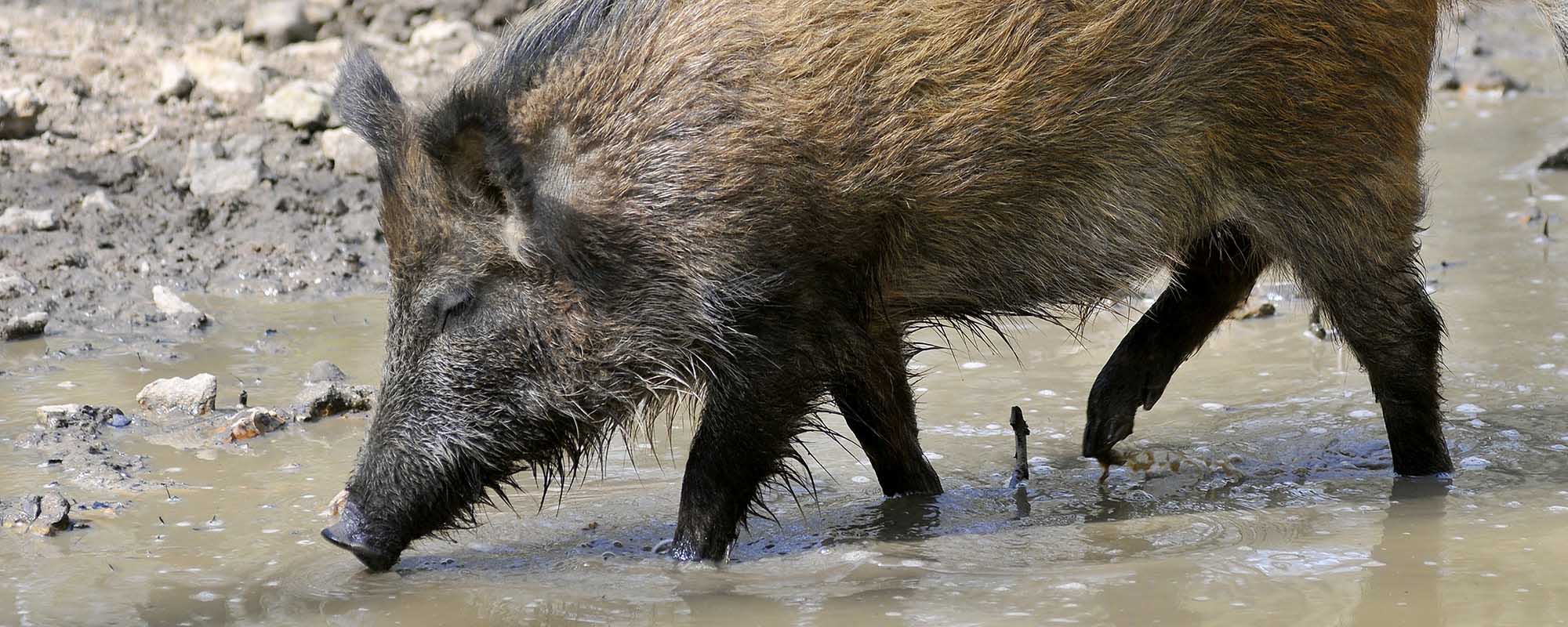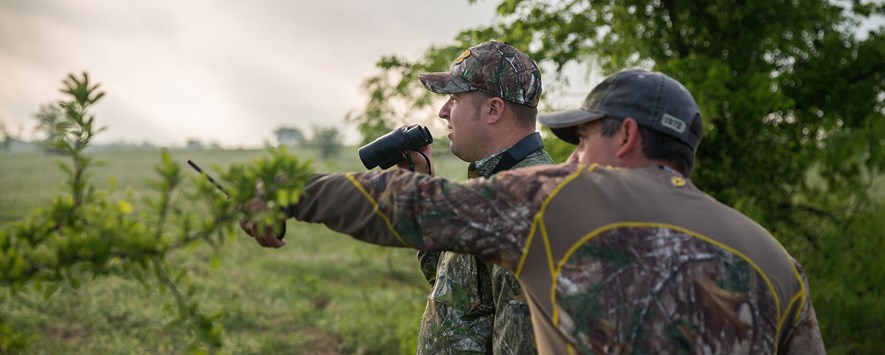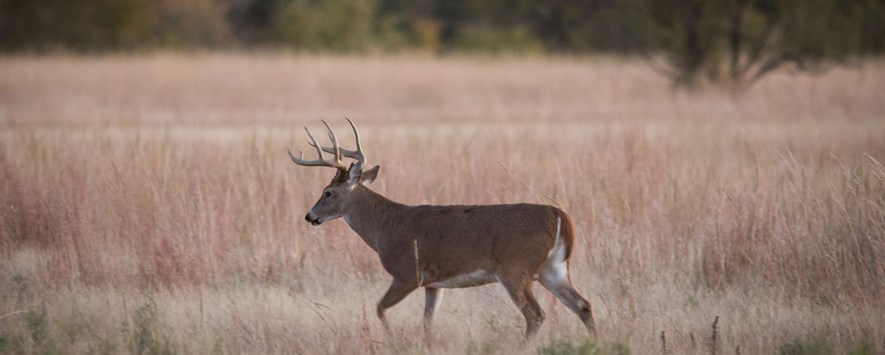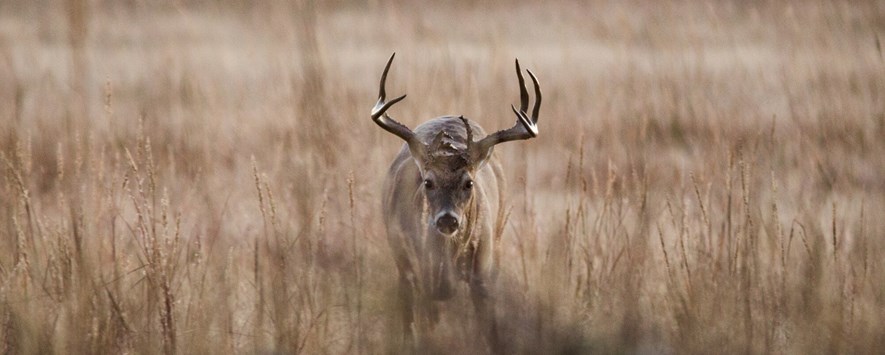Feral hogs are wild swine from domestic ancestry and belong to the family Suidae. There are three types of wild hogs found in the United States: feral hogs, Eurasian wild boar (Russian) and hybrids between these two types. All of these types are the same species.
California, Florida and Texas have the highest numbers of feral hogs in the U.S. Some of the Hawaiian Islands have substantial populations, and Oklahoma's population is healthy and growing. Despite their widespread populations, feral hogs are not indigenous (native) to the U.S.
 Native to the southwest U.S., the javelina is often confused with the feral hog. Javelinas are hog-like in appearance, however, they are not closely related. (photo by Warren Lynn)
Native to the southwest U.S., the javelina is often confused with the feral hog. Javelinas are hog-like in appearance, however, they are not closely related. (photo by Warren Lynn)
Although the collared peccary or javelina (Tayassu tajacu) is vaguely similar in appearance to the feral hog, it is a different animal. The javelina is native to the southwest U.S. and belongs to the family Tayassuidae. The identities of these animals are sometimes confused, but the feral hog belongs to a different species, genus and family than the javelina.
Ancestors of swine (Suidae family) date to the Miocene. During the period when the world was shifting and forming new continents, the swine family was excluded from the North American continent. It probably was not until the discovery of the continent by Europeans that swine found their way into what is now the United States. Early explorers such as Hernando Cortes and Hernando de Soto brought over domesticated swine, but it was not until the 1930s that the Russian wild boar was introduced.





